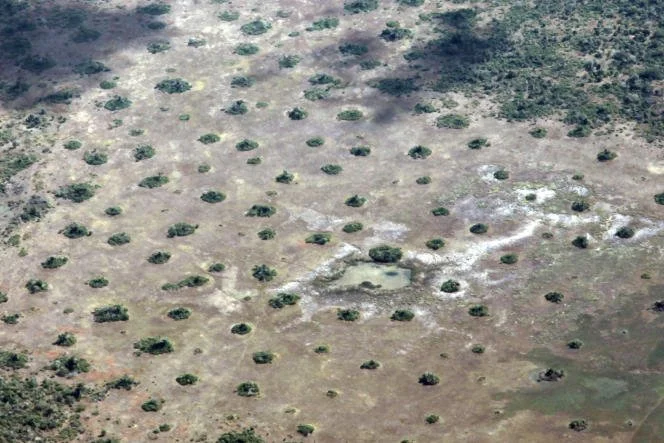New Study from Rob Pringle and team giving us info on the hated Isoptera
During persistent droughts, the biomass is reduced to a few patches of greenery, termite mounds. Photo Credit: Rob Pringle
We know well the termites, terrors of cities and ports.
A multidisciplinary team from Princeton University has just published an article in the journal Science that does justice to the hated Isoptera and, in passing, upsets certain established knowledge.
Four years ago, biologist Robert Pringle analyzed the structure and distribution of termite mounds in the arid zones of Kenya. These mounds, some 10 meters in diameter, hide a network of tiny galleries that rainwater occasionally passes through. But digging is digging! Termites feed, metabolize and leave behind plenty of nutrients. Better irrigated and richer, this land is transformed into an oasis for plants in search of vital energy and for animals. And all that is carefully organized: each termite mound has six neighbors, some 50 meters away from it.
"We have demonstrated that this organization makes it possible to make the most of all the resources."
— Rob Pringle, Quoted in Le Monde
Drought resistance
Except that, seen from an airplane, or from a satellite, this distribution is furiously reminiscent of another. Ecologists have in fact defined, for their part and for a long time, the stages which, as water becomes scarce, lead a fertile landscape to the desert.
With the persistent drought, the biomass is reduced, leaving only patches of greenery to persist.
Anxious to get everyone to agree, they turned to a third science: mathematics.
"In the presence of termite mounds, the vegetation resists longer, declines more slowly, with not one, but two thresholds, and regrows much more quickly when the precipitation reappears" , underlines the bio-mathematician. It suffices for this that the structure of the termite mounds remains. "But it can resist for decades ," continues Robert Pringle.
The Princeton biologists therefore invite us to add a "termite" component to the environmental arsenal.

